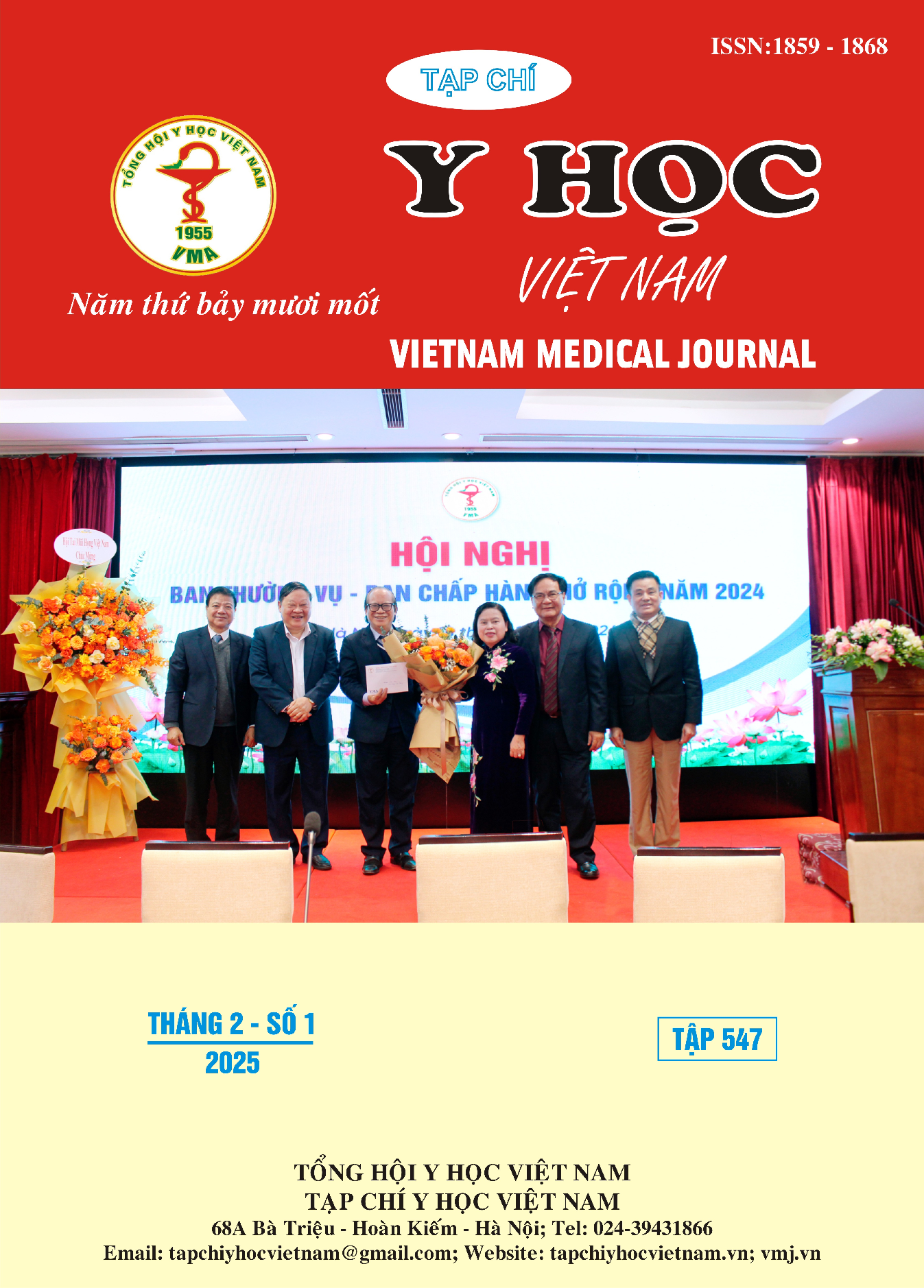CLINICAL CHARACTERISTICS, PARACLINICAL FEATURES, CAUSES, AND OUTCOMES OF PATIENTS WITH CARDIAC ARREST IN THE EMERGENCY DEPARTMENT OF THE UNIVERSITY MEDICAL CENTER HO CHI MINH CITY
Main Article Content
Abstract
Background: In-hospital cardiac arrest (IHCA) is a critical emergency necessitating a rapid and timely response from the resuscitation team. Emergency department cardiac arrest (EDCA), a subgroup of IHCA, is associated with a lower rate of survival and return of spontaneous circulation (ROSC). Despite its significance, research specifically focusing on EDCA remains limited. Identifying the clinical and paraclinical characteristics, causes, and outcomes of these patients will enhance the understanding of the current state of EDCA and provide valuable clinical data to improve patient management. Objective: To investigate the clinical and paraclinical characteristics, causes, and outcomes of patients with EDCA. Methods: A descriptive, retrospective cross-sectional study was conducted on adult patients (≥18 years old) with non-traumatic EDCA. Results: From December 1st, 2021, to August 30th, 2024, 51 EDCA patients were identified, with a mean age of 67.39 ± 17 years, and males accounted for 72.54%. Dyspnea was the most common symptom reported before cardiac arrest (60.78%). Pre-existing chronic diseases were documented in 84.31% of the patients. Cardiovascular disease was the leading cause of cardiac arrest (37.25%). The ROSC rate was nearly 47%, with 3.9% of patients being discharged in a conscious state. A CPR (Low-flow: LF) duration of 37 minutes, with an AUC of 0,949 (CI 95%: 0,885-1), suggested the best chance of ROSC. Preliminary analysis showed that low-flow time (LF) was associated with ROSC (OR: 0.949 [0.85-0.99], p=0.031). Conclusion: Cardiovascular causes are the leading cause of EDCA, with most NB patients having pre-existing chronic conditions. Survival rates are low. Time to CPR has been shown to have an independent association with the outcome of ROSC. We observed that the first 37 minutes offer the best chance of achieving ROSC therefore the importance of early detection of NT and initiation of CPR in improving outcomes for NB patients. However, common clinical parameters such as blood pH, lactate, liver function, and kidney function were unable to predict ROSC in our study population. Therefore, to gain a more comprehensive understanding, larger-scale studies are needed in the future.
Article Details
Keywords
In-hospital cardiac arrest, emergency department cardiac arrest, return of spontaneous circulation, cardiopulmonary resuscitation
References
2. Hsu SH, Sung CW, Lu TC, Wang CH, Chou EH, Ko CH, Huang CH, Tsai CL. The incidence, predictors, and causes of cardiac arrest in United States emergency departments. Resusc Plus. 2023 Nov 24;17:100514. doi: 10.1016/j.resplu.2023.100514. PMID: 38076384; PMCID: PMC10701431.
3. Kim JS, Bae HJ, Sohn CH, Cho SE, Hwang J, Kim WY, et al. Maximum emergency department overcrowding is correlated with occurrence of unexpected cardiac arrest. Critical Care. 2020; 24: 305.
4. Tan SC, Leong BS. Cardiac arrests within the emergency department: an Utstein style report, causation and survival factors. Eur J Emerg Med 2018;25 :12–7. https://doi.org/10.1097/MEJ.0000000000000427. PMID: 27749378.
5. Alnabelsi T, Annabathula R, Shelton J, et al. Predicting in-hospital mortality after an in-hospital cardiac arrest: A multivariate analysis. Resusc Plus. Dec2020;4: 100039. doi: 10.1016/ j. resplu.2020.100039
6. Emine Yuzbasioglu, Halil Dogan. Outcomes of arrest patients resuscitated in an emergency department: a prospective, observational study. Signa Vitae 2022 vol.18(3), 65-74.
7. Chih-Wei Sung et al. In-Hospital Cardiac Arrest in United States Emergency Departments, 2010–2018. Front. Cardiovasc. Med., 11 April 2022.
8. Po-cheng chen et al. Prognostic factors for adults with cardiac arrest in the emergency department: a retrospective cohort study. Signa Vitae 2022 vol.18(3), 56-64.
9. Maarten van Smeden, M., de Groot, J.A., Moons, K.G. et al. No rationale for 1 variable per 10 events criterion for binary logistic regression analysis. BMC Med Res Methodol 16, 163 (2016). https://doi.org/10.1186/s12874-016-0267-3


